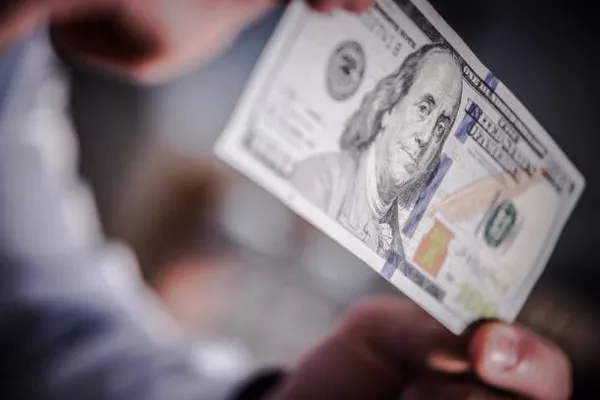In the world of numismatics, each bill tells a story, reflecting the rich history and cultural significance of its era. Among these, the 1953 series two dollar bill holds a special place, revered by collectors and historians alike. This article delves into the intricate details of this iconic bill, exploring its historical context, design elements, and most importantly, its value in today’s market.
Historical Context
The Birth of the 1953 Series
The 1953 series two dollar bill emerged during a transformative period in American history. Post-World War II, the United States experienced economic growth and stability, prompting the need for currency redesigns. In response, the U.S. Treasury introduced the 1953 series, featuring updated security features and aesthetic enhancements.
Design Elements
The design of the 1953 series two dollar bill epitomizes the artistic vision of its time. The obverse side features a portrait of Thomas Jefferson, the third President of the United States, captured with intricate detail. The reverse side showcases Monticello, Jefferson’s famed plantation in Virginia, rendered in a classical architectural style.
Understanding Variants
Star Notes
Among collectors, star notes hold particular intrigue due to their scarcity and uniqueness. Star notes are replacement bills issued to replace defective or damaged currency during printing. They are identified by a star symbol preceding or succeeding the serial number. For the 1953 series two dollar bill, star notes are highly sought after, commanding premiums in the collector’s market.
Red Seal vs. Green Seal
Another distinguishing feature of the 1953 series two dollar bill is the seal color variation. Early releases of the bill feature a red seal, while subsequent prints utilize a green seal. The transition from red to green seals occurred due to changes in currency production processes and security measures. While both variants hold value, collectors often exhibit preferences based on rarity and aesthetic appeal.
Determining Value
Condition
The condition of a 1953 series two dollar bill significantly influences its value. Bills in pristine condition, free from folds, creases, or discoloration, command higher prices in the collector’s market. Conversely, bills exhibiting signs of wear and tear may fetch lower valuations. Collectors often utilize grading systems, such as the Sheldon Scale, to assess the condition of currency accurately.
Rarity
Rarity is a crucial factor in determining the value of a 1953 series two dollar bill. Certain serial numbers, seal variants, or printing errors can contribute to a bill’s rarity and subsequently, its market value. Star notes, low serial numbers, and bills with unique printing anomalies are particularly prized among collectors. Rarity adds an element of exclusivity, driving demand and prices upwards.
Historical Significance
The historical significance of a 1953 series two dollar bill can also impact its value. Bills associated with notable events, historical figures, or specific production runs may attract premium prices. For example, bills signed by Treasury officials or bearing serial numbers corresponding to significant dates hold intrinsic historical value. Collectors often seek bills with compelling narratives or connections to pivotal moments in American history.
Market Demand
Market demand plays a pivotal role in determining the value of a 1953 series two dollar bill. Fluctuations in collector preferences, economic conditions, and cultural trends can influence the perceived worth of currency. Bills experiencing surges in popularity due to media exposure, museum exhibitions, or collector fads may witness spikes in demand and prices. Understanding market dynamics is essential for both buyers and sellers seeking to navigate the numismatic landscape.
Current Market Trends
Collector’s Market
In recent years, the collector’s market for 1953 series two dollar bills has demonstrated resilience and growth. Collectors, enthusiasts, and investors alike continue to show keen interest in acquiring rare and historically significant bills. Online marketplaces, auctions, and numismatic conventions serve as platforms for buyers and sellers to engage in transactions and exchange expertise.
Investment Potential
While the primary allure of collecting lies in appreciation for history and aesthetics, 1953 series two dollar bills also possess investment potential. Rare variants and bills in exceptional condition can accrue value over time, outperforming traditional investment instruments. However, investors should exercise caution and conduct thorough research before allocating funds to numismatic assets.
Educational Outreach
Efforts to educate the public about numismatics and currency collecting have contributed to increased awareness and participation in the hobby. Museums, educational institutions, and online resources offer valuable insights into the history, design, and value of 1953 series two dollar bills. By fostering a deeper understanding of currency, these initiatives enrich the collector’s experience and preserve cultural heritage for future generations.
Conclusion
In conclusion, the value of a 1953 series two dollar bill transcends mere monetary worth, encapsulating a rich tapestry of history, artistry, and culture. From its inception during a pivotal period in American history to its enduring appeal among collectors today, this iconic bill continues to captivate the imagination and inspire fascination. By exploring its historical context, design elements, and market dynamics, enthusiasts gain a deeper appreciation for the intrinsic value and significance of this timeless treasure. Whether viewed as a collectible, an investment, or a piece of living history, the 1953 series two dollar bill stands as a testament to the enduring legacy of American currency.


